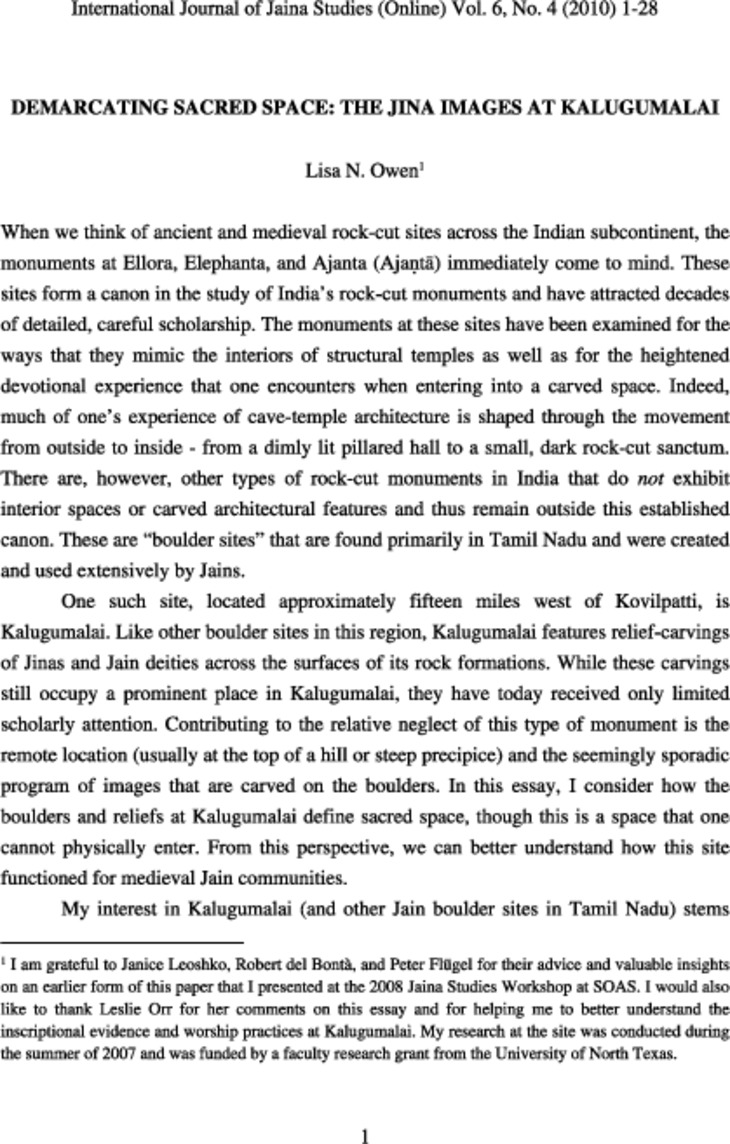
International Journal of Jaina Studies
(Online) Vol. 6, No. 4 (2010) 1-28
Lisa N. Owen
I am grateful to Janice Leoshko, Robert del Bontà, and Peter Flügel for their advice and valuable insights on an earlier form of this paper that I presented at the 2008 Jaina Studies Workshop at SOAS. I would also like to thank Leslie Orr for her comments on this essay and for helping me to better understand the inscriptional evidence and worship practices at Kalugumalai. My research at the site was conducted during the summer of 2007 and was funded by a faculty research grant from the University of North Texas.
Abstract
In the southern districts of Tamil Nadu, there are a number of medieval Jain sites that feature large boulders or outcrops of stone that are carved with images of Jinas and Jain deities. The relief carvings that constitute these sites typically span the entire surface of the boulder and are often accompanied by donative inscriptions. Given the large number of these reliefs and the fact that they are independent donations, most art historians examine them in an effort to track changes in Jain iconography and style. This approach, however, tends to deny the efficacy of these images when viewed collectively. More importantly, it denies the ways that these images demarcate Jain notions of sacred space. In this paper, I examine the 9th-10th century site of Kalugumalai primarily as an expression of sacred space rather than as a repository of individual carvings or inscriptions. These images clearly function collectively to identify the boulder and its surrounding environs as a place sacred to Jains and as a place worthy of worship. By examining the nature of the "site" rather than examining individual sculptures we can come to a better understanding of how such places functioned in their medieval context.Demarcating Sacred Space: The Jina Images at Kalugumalai
When we think of ancient and medieval rock-cut sites across the Indian subcontinent, the monuments at Ellora, Elephanta, and Ajanta (Ajaṇtā) immediately come to mind. These sites form a canon in the study of India's rock-cut monuments and have attracted decades of detailed, careful scholarship. The monuments at these sites have been examined for the ways that they mimic the interiors of structural temples as well as for the heightened devotional experience that one encounters when entering into a carved space. Indeed, much of one's experience of cave-temple architecture is shaped through the movement from outside to inside - from a dimly lit pillared hall to a small, dark rock-cut sanctum. There are, however, other types of rock-cut monuments in India that do not exhibit interior spaces or carved architectural features and thus remain outside this established canon. These are "boulder sites" that are found primarily in Tamil Nadu and were created and used extensively by Jains.
One such site, located approximately fifteen miles west of Kovilpatti, is Kalugumalai. Like other boulder sites in this region, Kalugumalai features relief-carvings of Jinas and Jain deities across the surfaces of its rock formations. While these carvings still occupy a prominent place in Kalugumalai, they have today received only limited scholarly attention. Contributing to the relative neglect of this type of monument is the remote location (usually at the top of a hill or steep precipice) and the seemingly sporadic program of images that are carved on the boulders. In this essay, I consider how the boulders and reliefs at Kalugumalai define sacred space, though this is a space that one cannot physically enter. From this perspective, we can better understand how this site functioned for medieval Jain communities.
My interest in Kalugumalai (and other Jain boulder sites in Tamil Nadu) stems from previous work that I have conducted on Jain rock-cut monuments elsewhere in India, specifically those found at Aihole (Aihoḷe), Badami (Bādāmī), Dharashiva (Dhārāśiva), Ellora, and Ankai (Owen 2006a). While researching India's Jain cavetemples I discovered that boulder sites are not examined as sacred places for devotional activities but primarily as examples of medieval sculpture. In many survey texts of Jain art and architecture (Ghosh 1975; Sivaramamurti 1983; Hegewald 2009), individual relief-carvings from various boulder sites are selected and analyzed for their iconographical and stylistic attributes. The site of Kalugumalai, for example, is included in Ghosh's (1975: 229) edited volume under the chapter subheading "Sculpture in South Karnataka and Tamil Nadu." The text is accompanied by three photographs of the site: 1) a distant view of one of Kalugumalai's rock formations with surface carvings, 2) a detail of a relief depicting the goddess Ambikā, and 3) a relief featuring the Jina Pārśvanātha (Figure 1).
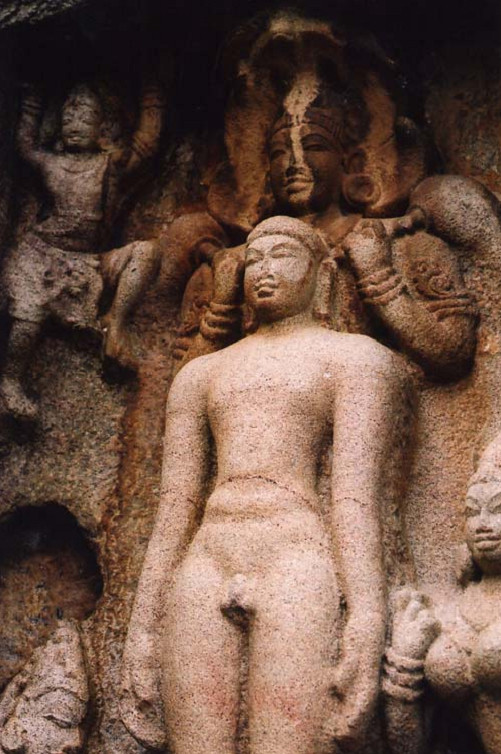 Figure 1: Detail of Pārśvanātha from Group 3 at Kalugumalai
Figure 1: Detail of Pārśvanātha from Group 3 at Kalugumalai
The latter image, which portrays the Jina sheltered by his attendant deity Dharaṇendra, is typically highlighted in the scholarship as it presents the serpent king in semi-human form rather than as a canopy of cobra hoods over the Jina's head. A photograph of this same relief (with adjacent carvings) represents the site of Kalugumalai in Hegewald's (2009: 490) survey and it serves as the primary illustration in the front of Sivaramamurti's (1983: 11) Panorama of Jain Art where it is described as one of the finest examples of sculpture depicting this Jina. In addition, a line drawing of the Pārśvanātha relief is found on the cover of Dhaky's (1997) edited volume Arhat Pārśva
and Dharaṇendra Nexus. Indeed, this particular image has become an icon for the site itself.
While the uniqueness and beauty of this image cannot be contested, its privileged presentation in these publications precludes an in-depth understanding of its larger visual and spatial context. As I will discuss in more detail below, the Pārśvanātha relief is in fact only one of nearly twenty-five images carved on the surface of that particular rock formation. Thus, even in studies that recognize the contributions of Kalugumalai in terms of its sculpture, the way the images are examined as isolated reliefs denies any sense of a "power of place" and how the images and their boulders collectively define Jain sacred space. I argue here that acknowledging Kalugumalai exclusively as a repository of sculpture severely limits our understanding of how these monuments functioned as clear and permanent statements of Jain presence and devotional practice in medieval Tamil Nadu. In this essay, I explore how sacred space is defined at Kalugumalai through its five groups of boulder-reliefs that both correspond and depart from Jain carvings located in more "traditional" examples of rock-cut architecture. The nuanced connections between the ways that these two types of monuments demarcate devotional space suggest that we need to abandon art historical categories of "architecture" and "sculpture" and consider how sacred space and power of place is expressed through more complex visual systems.
Examining Kalugumalai
In order to address the ways that sacred space is defined at Kalugumalai through its imagery, it is necessary to first describe the physical characteristics of the site and the arrangement of its approximately one hundred and fifty relief-carvings. Unlike structural and rock-cut temples that clearly transform the environment from a natural landscape to one dominated by a man-made structure, the boulder site of Kalugumalai highlights the irregularities of the rocky terrain. The reliefs are incised on various rock formations that are located at the apex of an outcrop of stone that rises some six hundred feet above the town. This outcrop serves as the most significant geological landmark in Kalugumalai and can be seen from a great distance. Today, the town of Kalugumalai is nestled around this landmark and is most known for its eighteenth to nineteenth-century temple-complex dedicated to Murugan. This temple and associated devotional activities have been thoroughly studied by A. Good (2004). The complex (known as Kalugacalamurtti temple) features an excavated interior (carved into the southwestern corner of the hill) with external structural additions. There is some evidence that the cave-shrine itself may have originally been Jain (ib., p. 3). A date for such excavation activities, however, has yet to be determined.
It is significant to note that the rock formations at the top of the hill remain unaltered, with the exception of their surfaces. In fact, one cannot easily separate the natural form of the boulder from its carvings. In other words, the reliefs tend to enhance the natural shapes of the rocks rather than modify them. Though images are incised in horizontal registers, their depth of carving mimics the undulations of the rock's surface (Figure 2). This differs greatly from serial images found on cave walls that are carved at roughly equal depths to heighten the illusion of a structural temple wall. Moreover, the images at Kalugumalai are presented in plain rectangular or square niches rather than the more elaborate architectural framework that is usually carved or painted around the niches of images in medieval Jain caves. The boulders and their carvings at Kalugumalai can therefore be viewed more as colossal sculptural tableaus rather than as a spattering of individual images.
 Figure 2: Detail of Group 3 at Kalugumalai
Figure 2: Detail of Group 3 at Kalugumalai
Published views and descriptions of the relief carvings at Kalugumalai typically illustrate and describe a single group of images that span one rock formation. This approach, unfortunately, denies any sense of a power of place that is created by the large number of carvings on different rock surfaces. In my research at the site, I have identified five separate groups of images that can be examined and analyzed. Though I have divided the reliefs into five groups, it appears that all of the carvings at Kalugumalai date to the ninth or early tenth century.[1] It should be stated at the outset, however, that my numbering of the five groups is not based on chronological factors, but on the order that one sees the reliefs when approaching the apex of the outcrop from the northwest. This directional approach is highlighted by a few rock-cut steps that assist one in climbing the steep terrain up to Group 1.
The first "group" consists of a solitary relief of an enthroned Jina (Figure 3). The carving measures approximately four feet in height and is incised deep within the rock. The Jina is presented on a lion throne with an elaborate throne-back consisting of a bolster and crossbar that terminates in a makara and vyāla design. Two flywhisk bearers emerge from behind the crossbar while two other male devotees flank the throne base. The Jina is crowned by a triple chattra and curls of foliage that form a broad canopy over the Tīrthaṅkara. Five tendrils of foliage contain a central female dancer accompanied by four male musicians. Two of the musicians play a long stringed instrument while the others hold a drum and pair of cymbals. The inclusion of these elements, along with the foliage and details of the throne, suggest a ninth or early tenth-century date.[2] Carved above and to the sides of the Jina are celestial figures holding long-stemmed lotuses and/or making gestures of homage. Also across the top of the panel are riders on horseback and an elephant depicted as if emerging from the depths of the carving.
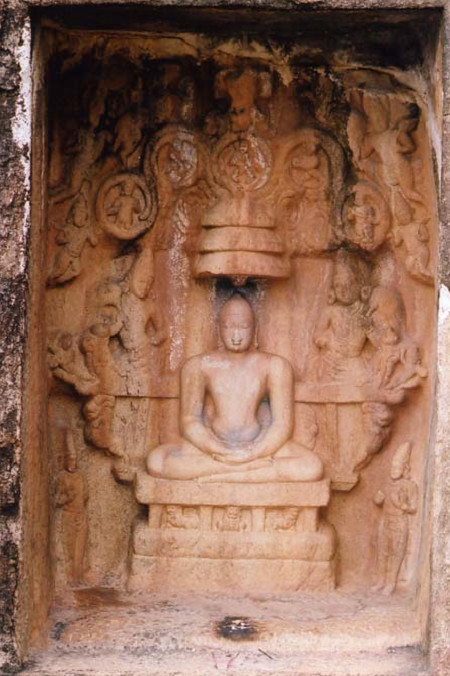 Figure 3: Group 1 at Kalugumalai
Figure 3: Group 1 at Kalugumalai
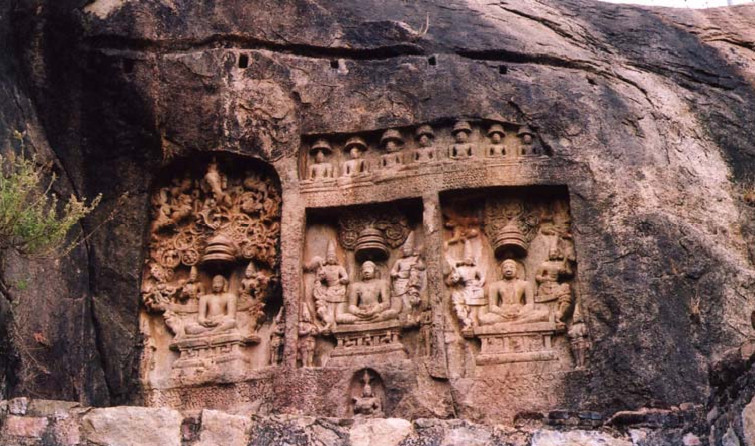 Figure 4: Group 2 at Kalugumalai
Figure 4: Group 2 at Kalugumalai
The second group of carvings is located some distance away on a rock formation that lies to the east of Group 1. These reliefs, as well as those in Group 3 discussed below, are partially obscured by a recently renovated temple-complex dedicated to a local goddess and to the god Ayyanār. The carvings in Group 2 feature three independent Jina images arranged horizontally across the face of stone (Figure 4). These Jinas exhibit a similar iconographic program as the solitary image in Group 1. Major elements include the lion throne, flywhisk attendants, standing devotees, triple chattra, halo, and a tree. The image to the far left (when facing the reliefs) best correlates with the Jina in the first group as it also contains the five circular tendrils of foliage, musicians and dancer, riders on horses, and a central elephant. Carved above two of the Jina panels in Group 2 is a series of seven smaller Jinas. These figures are presented with the triple chattra and are supported by a double-lotus seat rather than a lion throne. All of the images in Group 2 are carved with donative inscriptions, the content of which will be discussed later in the essay.
The reliefs comprising the third group of images at Kalugumalai are found across a large surface of stone somewhat adjacent to Group 2. Jinas are presented here as both individual enthroned figures and as part of a larger series of Tīrthaṅkaras (Figure 2). In addition, small panels of a single, isolated Tīrthaṅkara are carved. These figures have the same limited attributes of the triple chattra and double-lotus seat as those Jinas presented in a larger series. Also included in this group is the highly celebrated carving of the Jina Pārśvanātha and his attendant Dharaṇendra (Figure 1). According to early medieval textual accounts,[3] Pārśvanātha, in a previous life, tried to save a pair of snakes that were being burnt in a brahmin's sacrificial fire. Although Pārśvanātha's attempt at rescuing them failed, he was reborn in the next life as the twenty-third Jina, while the snakes were reborn as a serpent king and queen. The brahmin, on the other hand, was reborn as a demon, and attacked Pārśvanātha with fire, rocks, and torrential rains in order to curtail the Jina's enlightenment. However, Pārśvanātha was not deterred from achieving liberation since the serpent king, Dharaṇendra, shielded and protected him by spreading his cobra hoods over the Jina's head. The serpent queen, who is identified as Padmāvatī in later texts, also assisted in Pārśvanātha's protection by holding a parasol over him.
In the relief at Kalugumalai, both the serpent king Dharaṇendra and his queen Padmāvatī are presented in a novel way. Rather than being represented solely as a series of cobra hoods, Dharaṇendra is depicted in semi-human form and stands behind the Tīrthaṅkara. Dharaneṇdra holds two flywhisks, thereby accentuating themes of both protection and glorification of the Jina. Dharaṇendra is the only figure that provides shelter for the Jina, as Padmāvatī is not carved with a parasol extended over the Jina's head - a narrative element which is found in most images of this period. Carved in the upper left corner of the relief is the demon Śaṁbara (also known as Meghamālin) who tried to disrupt the Jina's meditation by hurling a giant boulder at him.[4] As in other rockcut representations of the attack on Pārśvanātha, the demon's hands are raised above his head suggesting that the upper ledge of the niche is his weapon of destruction. This element can be interpreted more literally here at Kalugumalai as it appears that the demon is about to hurl the very boulder that the relief is carved upon.
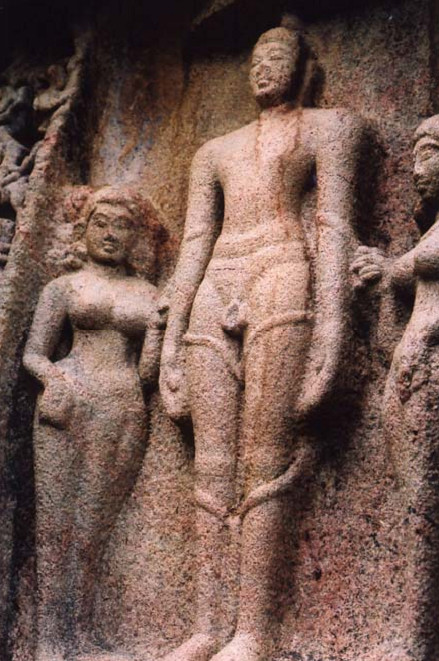 Figure 5: Gommaṭeśvara from Group 3 at Kalugumalai
Figure 5: Gommaṭeśvara from Group 3 at Kalugumalai
Within Group 3, we also find a single relief of Gommaṭeśvara (Figure 5). Gommaṭeśvara also endured hardships during his meditation towards enlightenment. Gommaṭeśvara was a warrior-prince who went to battle against his own brother in order to maintain his portion of his father's kingdom.[5] At the precise moment of his victory, however, Gommaṭeśvara realized the transience of worldly affairs and went to the forest to perform austerities in order to escape the sufferings of existence. It is said that he stood in a meditative posture for so long, that vines grew up around his body. Although Gommaṭeśvara achieved omniscience and became a kevalin, he did not preach in a samavasaraṇa and therefore did not become a Tīrthaṅkara. Gommaṭeśvara is shown here at Kalugumalai with the standard Digambara iconography of two female attendants (vidyādharī) and the vines that encircle Gommaṭeśvara's legs. Thus, the presentation of Gommaṭeśvara and the Jina Pārśvanātha on the same rock surface may present the difficult, but successful achievement of kevalajñāna by a mortal man and by one destined to become a Jina. The visual pairing of these two figures is found in the ca. seventhcentury Jain cave at Aihole (Aihoḷe) and becomes quite popular in the ninth century at Ellora where we find at least nineteen examples (Owen 2006a: 198-200). Moreover, this pair is also found in the images constituting Group 4 at Kalugumalai.
 Figure 6: Group 4 at Kalugumalai
Figure 6: Group 4 at Kalugumalai
Groups 4 and 5 follow a gentle bend in the rock and are shaded by the overhanging branches of a large tree. The images in Group 4 (Figure 6) are carved into a shallow rockcut shelter in the lower right corner of the rock formation. The shelter may have originally been a natural cavern that was subsequently modified by Kalugumalai's artists. It measures approximately two feet in depth and there are seven seated Tīrthaṅkaras that flank a central Jina triad. Carved on either side of the central triad are standing images of Gommaṭeśvara and Pārśvanātha. All of the images are carved with donative inscriptions.
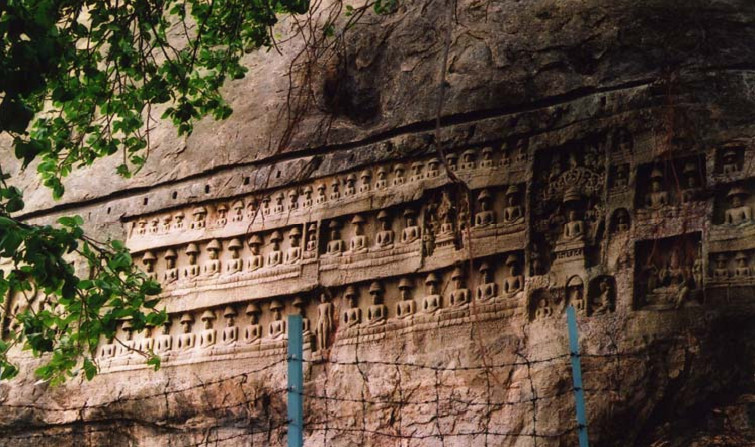 Figure 7: Group 5 at Kalugumalai
Figure 7: Group 5 at Kalugumalai
Group 5 is carved on the same surface of rock as Group 4 and it contains the largest number of images (Figure 7). The majority of these approximately fifty carvings present the Tīrthaṅkara as part of a series (the longest being twenty-five Jinas) or in pairs of two or four. There are a few standing or seated Jinas with chattras and lotus supports, and there are also three panels that depict enthroned Jinas with all of the elaborate attributes described earlier. Other carvings of Tīrthaṅkaras, located on the far left side of the rock formation, appear to have been left unfinished (Figure 8). The bodily forms of the Jinas seemingly emerge and dematerialize, creating a dynamic sense of movement across the rock's surface. Contributing to this illusion is the variety of stages of carving exhibited by the reliefs. Some of the images are only slightly incised while others present fuller outlines of the figural form. The different stages of completeness allow us to contemplate (and appreciate) the ways that the imagery relates to the surface of the rock, almost as if the images themselves are svayambhu (self-born) rather than man-made.[6]
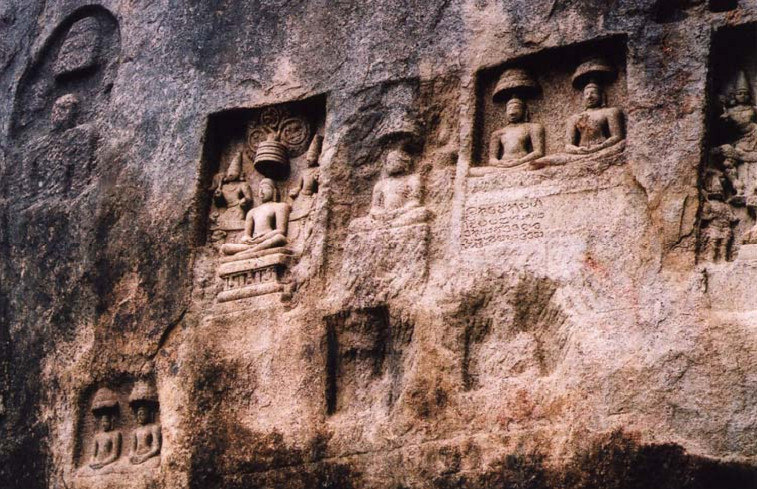 Figure 8: Left side of Group 5 at Kalugumalai
Figure 8: Left side of Group 5 at Kalugumalai
Also in contrast to the other four groups, the reliefs comprising Group 5 include two individual panels of female deities: the goddesses Padmāvatī and Ambikā. Rather than being portrayed as an attendant to the Jina Pārśvanātha, the relief of the goddess Padmāvatī in Group 5 presents her as an important deity in her own right (Figure 9). She is identifiable through the five cobra hoods that form a canopy over her conical crown. Padmāvatī is seated in lalitāsana on a large single lotus and she appears to hold a round fruit and a rosary (or noose) in her lower left and right hands, respectively. Her upper hands hold a goad and a snake. The goddess is richly ornamented with bracelets, earrings, and a necklace and she is flanked by two female attendants holding flywhisks and citrons. Padmāvatī is presented in larger scale than her attendants, indicating her superior status.
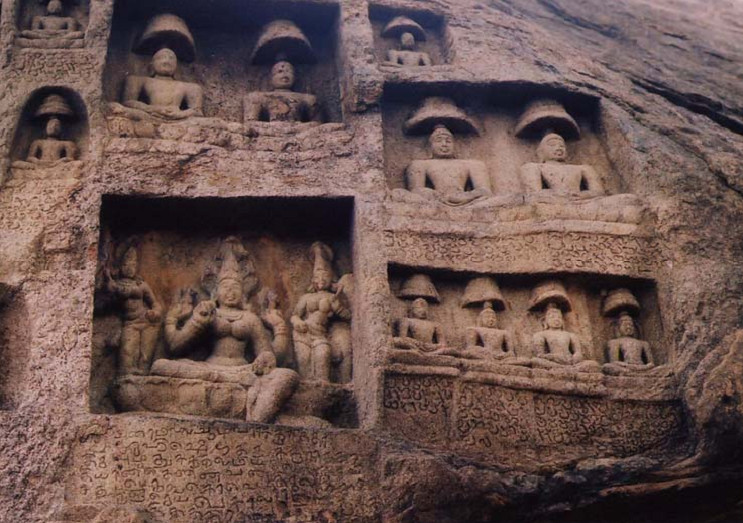 Figure 9: Padmāvatī from Group 5 at Kalugumalai
Figure 9: Padmāvatī from Group 5 at Kalugumalai
Further down the left side of the rock's surface is a relief depicting the goddess Ambikā (also known as Kūṣmāṇḍinī). Narratives about this goddess were written in the fourteenth through sixteenth centuries to explain her iconography and her role as an attendant (śāsanadevī) to the twenty-second Jina, Neminātha. While Śvetāmbaras and Digambaras have their own versions of this story, the turn of events leading to her transformation from mortal to goddess are quite similar in both traditions. Ambikā was banished from her household with her two children because she offered food to a Jain monk that was originally intended for a śrāddha ceremony. During her banishment, she and her children became hungry and miraculously a mango tree (also identified as a "wish-fulfilling" tree) and a body of water appeared before them. Thus, she could provide nourishment for herself and her children. Meanwhile, back at her household, some miracles occurred that convinced Ambikā's husband that her actions were indeed honourable.[7] Ambikā's husband then decided to retrieve his wife and children. However, when he tried to do so, Ambikā thought that he was coming to harm her and so she tried to hide. Ambikā died in the process[8] and was reborn as a śāsanadevī to the Jina Neminātha. Her husband also died soon afterwards, and was reborn as her lion vāhana.
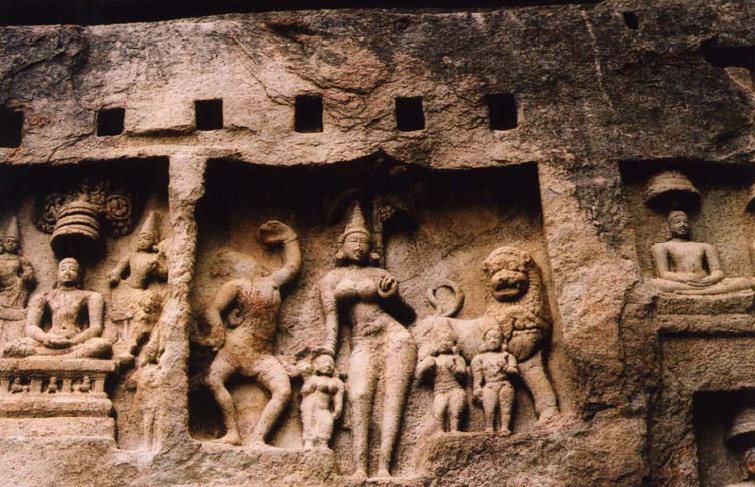 Figure 10: Ambikā from Group 5 at Kalugumalai
Figure 10: Ambikā from Group 5 at Kalugumalai
The image of Ambikā at Kalugumalai (Figure 10) clearly displays the attributes commonly associated with this goddess, namely the mango tree (seen over her proper left shoulder), her two male children, and the lion. Furthermore, Ambikā is presented as a two-armed goddess and stands with her right hand resting on the head of a small female attendant. The enigmatic male figure on her proper right has been identified as Ambikā's agitated husband prior to his transformation into a vāhana (Ekambaranathan 2005: 36), however, I am not certain about this identification. What is significant to note is that Ambikā is depicted, like Padmāvatī, as an independent goddess and not as a subsidiary attendant (śāsanadevī) to the Jina Neminātha. In fact, there is no visual reference to a Jina in either goddess relief.
The inclusion of these two goddesses at Kalugumalai has been noted by many scholars (Desai 1957: 64-5; Sivaramamurti 1961: 27; Ghosh 1975: 229; and Ekambaranathan 2005: 36). In fact, the carvings are usually discussed along with the novel image of Pārśvanātha and Dharaṇendra from Group 3. The most thorough examination of these goddesses, however, is by L. Orr (2005). In her article on medieval goddesses in south India, Orr questions the saliency of using sectarian categories as a means to enhance our understanding of the religious art of Tamil Nadu, especially in regard to goddess imagery. She notes that the iconographic and stylistic parallels exhibited in goddess imagery produced in medieval Tamil Nadu suggest that the specific religious or sectarian affiliation of the deities may have had little meaning to those who worshipped them. To demonstrate this point, Orr compares the reliefs of Padmāvatī and Ambikā at Kalugumalai to other goddess images of the same general period and locale: a relief of a goddess worshipped today as Annapūrṇa at Tiruparankunram (Tiruparankuṇṛam) and an unidentified goddess (possibly Siddhāyikā, Padmāvatī, or Ambikā) carved at Kilakkudi (Kilakkuyilkudi). Utilizing art historical, literary, and epigraphical evidence, Orr persuasively shows that the identities of these goddesses as being either Hindu or Jain, local or translocal, and/or central or peripheral, are more fluid than we currently ascribe them to be. According to Orr (2005: 34):
"The resemblance among the images of goddesses whom we would today categorize as Jain or Hindu, the vocabulary used in the inscriptions to name them, their appearance in diverse ritual settings, and the stories told about them make the task of assigning them to their "proper" place immensely complicated."
While the goddess reliefs at Kalugumalai do indeed transcend religious and/or sectarian boundaries in terms of their iconography, nomenclature, and the stories written about them, their inclusion among the numerous Jina images necessarily places them within a Jain visual context. Out of the approximately one hundred and fifty images at Kalugumalai, only two are goddesses. The remaining reliefs (with the exception of two representations of Gommaṭeśvara) depict standing or seated Tīrthaṅkaras. Thus the number and visual repetition of the liberated being transforms the landscape into one that is recognizably Jain. However, we must examine the ways that Jain identity is constructed at the site, taking into account other types of evidence that reveal multireligious artistic and devotional activities.
Image, Text, and Sacred Space at Kalugumalai
Given the five different groups and large number of Jina images at Kalugumalai, how do we come to a better understanding of their meaning and devotional use in medieval Tamil Nadu? How do they collectively create a Jain sacred site? First and foremost, we need to recognize the fact that these images are independently commissioned works. Nearly all of the images contain individual donative inscriptions that identify the patron (or patrons), the patron's status as a member of the monastic or lay community, and his or her place of residence. According to P.B. Desai's (1957: 66-7) analysis of the inscriptions, a large number of the images were commissioned by revered teachers within the monastic community along with their lay and monastic disciples. Particularly prominent are the number of female teachers (Tamil kuratti or kurattiyar) who are mentioned specifically by name. Also noteworthy are the distances traveled to commission work at Kalugumalai. Places that are mentioned in the epigraphs include villages in modern-day Tirunelveli, Cuddalore, and Kanyakumari districts as well as the site of Jina-Kanchi (Jina-Kāñcī) in Kanchipuram district. Clearly, Kalugumalai served as an important tīrtha for local and non-local Jain communities.
 Figure 11: Detail of a Jina and laywoman from Group 5 at Kalugumalai
Figure 11: Detail of a Jina and laywoman from Group 5 at Kalugumalai
While the names and titles of individuals are included in the epigraphs, they are not visually represented in the site's imagery. Out of the approximately one hundred and fifty images at Kalugumalai, there is only one carving that could possibly be identified as a donor. The figure is a laywoman and she is carved adjacent to a singular Jina relief from Group 5 (Figure 11). She is depicted in a gesture of homage (or possibly holding an offering between her palms) and sits with one leg tucked underneath her body with the other knee slightly raised.[9] She wears her long hair pulled back in a bun and she is adorned with large circular earrings. Opposite this figure (to the left of the Jina panel) is a relief of a male seated in meditation. Given the absence of a triple chattra or the matrix of stone to carve this attribute, this figure may represent a monk. If it does, this is the only portrait that makes a visual reference to the monastic community at the site. The notable absence of images of monks and nuns at Kalugumalai contrasts to other contemporaneous boulder carvings, such as those found at Shravana Belgola (Śravaṇa Beḷgoḷa) in Karnataka, where members of the monastic community are often portrayed alongside a Jina.[10]
The general lack of human portraits (as either donors and/or worshippers) also departs from many of India's medieval Jain caves where both monastic and lay figures can be found. For example, worshippers are commonly seen in images that are deemed "intrusive" - carvings that appear to have been added to a pre-existing structure or sculpted program. "Intrusive" images are typically donative in nature and often include human worshippers in homage to a Jina. In the cave setting, they are often found on rockcut pillars as these elements tend to have available surfaces for carving. "Intrusive" images are also often carved on the front walls of caves and if there is space available, near the entrance to the rock-cut sanctum. They appear at a number of sites and are especially evident, for example, in the Jain caves at Ellora (Owen 2010b).
What is interesting at Kalugumalai, however, is the fact that almost all of the reliefs are donative in nature, even "intrusive" to some extent, and yet they do not visually emphasize the role of human donors or worshippers. Instead, the Jina images at Kalugumalai have a better correspondence with planned sculptural programs found on the sidewalls of cave interiors and inside the main sanctum.
As I have highlighted in my descriptions of the five groups at Kalugumalai, there are two main presentations of the Jina: 1) as part of a larger series or 2) in an individual panel as an enthroned being accompanied by flywhisk attendants and/or musicians. In regard to the series of Jinas at the site, it should be stated that there are no panels at Kalugumalai that depict a unified group of twenty-four Tīrthaṅkaras. In fact, the longest continuous series (found in Group 5) contains twenty-five Jinas, each having their own donative inscription (Figure 12). The inscriptions in some ways deny a collective reading of these images as the panels for the epigraphs are carved at different surface levels to provide greater legibility. Thus, these carvings present us with a series of individual Jinas rather than a cohesive group. This is a departure from the carvings at Tirunatharkundru (Tirunatharkuṇḍru) near Gingee, for example, which clearly present the twenty-four Tīrthaṅkaras as a single entity.[11]
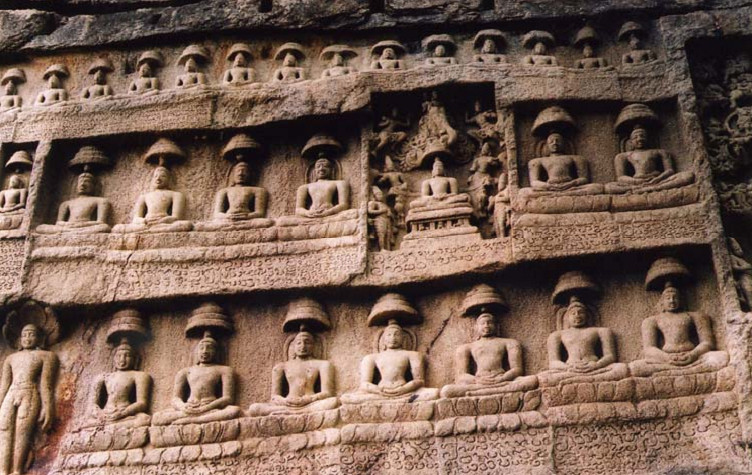 Figure 12: Detail of Jina Images from Group 5 at Kalugumalai
Figure 12: Detail of Jina Images from Group 5 at Kalugumalai
Although the series of Jinas at Kalugumalai are inscribed as separate entities, visually they are linked together through their limited attributes and through the plain surface of rock behind them. Their similarity in size and body-type points to the undifferentiated condition of the Jina's liberated state while their repetition underscores the multiplicity of such figures.[12] Moreover, none of the Jinas at Kalugumalai (either individual or in a series) are distinguished through identifying emblems or attendant couples (śāsanadevatās).[13] The only Tīrthaṅkara that remains identifiable through an attribute is Pārśvanātha and this specific Jina is represented in only four images.
The universality of the liberated being is further suggested through the inscriptions at Kalugumalai as the Jina images are not differentiated by name. Most of the Jina reliefs are identified with the phrase tiru mēni, "sacred image" (Desai 1957: 66). The lack of specification in the epigraphical material parallels Orr's work on the nomenclature of goddesses recorded in medieval Tamil inscriptions and prompts us to consider the local context of worship activities at the site. Even though I am arguing here that an identifiably Jain sacred site was created at Kalugumalai through the numerous Jina images, this does not preclude its use by "non-Jain" devotees. Multi-religious aspects of the site will be further addressed in my concluding remarks.
Perhaps surprisingly, the serial presentation of Jinas at Kalugumalai (whether as twenty-five or in groups of two or four) visually accords with the arrangement of Jina images often found in cave interiors. In India's medieval Jain caves, carvings of Jinas typically line the sidewalls of the excavations, forming a ring of Tīrthaṅkaras that face the interior of the excavation. Jinas are either carved in such a way as to fill the entire wall space of the cave, or they are grouped in twos or fours, with carved pilasters serving as visual dividers. A similar presentation may be seen at Kalugumalai, though the artists have laid out these programs across the surface of the rock, taking into account the natural shape of the boulder. Like a two-dimensional maṇḍala, these reliefs do indicate a sense of ritual space that can be envisioned by the worshipper. When one approaches the rock formation, one can metaphorically be surrounded by Jinas. Thus, rather than being viewed as a haphazard collection of carvings, the serial Jinas at Kalugumalai conform to visual patterns of imagery commonly found and experienced within India's Jain cave temples.
While Kalugumalai's presentation of a series of Jinas exhibits visual ties to imagery carved along the sidewalls of cave interiors, it is the individual enthroned Jina panels that seemingly correspond to main shrine images. Within the main sanctum of many of India's Jain caves, the Jina is presented as a "spiritual king."[14] The Tīrthaṅkara typically sits on a lion throne, a support that is traditionally associated with royalty and kingship. In addition, the throne alludes to the Jina's kṣatriya lineage and his spiritual authority over secular concerns. Given the carvings of makaras, vyālas, and other mythological creatures commonly found on the back of the throne, one could say that the Jina's authority spreads to divine and cosmological realms as well. The presentation of the Jina as a special being is further heightened through the number of attendants that surround him. Most images within cave sanctums depict the Jina with flywhisk attendants and celestial devotees who make gestures of homage. Music is also often alluded to either by representations of musicians or by instruments alone. In some sites, the Jina's tree is included with the triple chattra and halo - attributes that underscore his status as a liberated being.
If these images within the rock-cut shrine indicate a common type used in medieval devotional practices, can we somehow view the enthroned Jina reliefs at Kalugumalai in the same way? In other words, were these images singled out for pūjā? Interestingly, the solitary image of Group 1 (Figure 3), which presents the Jina as a "spiritual king," is the most accessible image for worship. Not only is it carved at a height conducive to forms of limb pūjā and/or lustration (abhiṣeka), but it is also carved deep into the rock which creates a shelf in front of the image. This shelf could have been used for the placement of offerings.[15]
The images in Group 4 are also ideally carved to receive libations and other forms of limb pūjā. In addition, the arrangement of this series of Tīrthaṅkaras gives primacy to a central Jina triad (Figure 6). Jinas flanking other Jinas are typically found in later medieval caves, such as in the Yadava-period excavations at Ellora (ca. 13th century), the caves at Ankai (ca. 12th century) and a small excavation near Patne village in Jalgaon district (ca. 12th century). Thus, Group 4 at Kalugumalai may have been created after the other groups to provide greater access for devotional activities. Furthermore, the central triad is highlighted through the flanking figures of Gommaṭeśvara and Pārśvanātha. In the cave setting, these figures are often carved facing each other from opposite walls. In some caves, they are carved or painted on opposite sides of a shrine doorway. As these two figures typically demarcate sacred space within cave interiors, the employment of Gommaṭeśvara and Pārśvanātha in Group 4 may serve a similar function - suggesting parallels between the central triad relief and images enshrined within rock-cut sanctums.
We can also turn to the epigraphical evidence at Kalugumalai to better understand worship activities. While a few of Kalugumalai's donative inscriptions mention general worship/service (tiruppaṇi) (SII 5.357), sacred offerings (tiru amutu) (SII 5.361), a gift of ghee or sheep for sustaining perpetual lamps (SII 5.307-8 and 5.328), and the practice of image lustration (abhiṣeka) (SII 5.361), the majority of these activities appear to have been directed at a Jina image enshrined at a neighboring site called Tirunechchuram.[16] Although some scholars have identified Tirunechchuram as the original name of Kalugumalai (Desai 1957: 66 and JIT 1987: 63), I am not entirely convinced that these sites are one and the same. In the inscriptions at Kalugumalai, the Jina of Tirunechchuram is identified as either Araimalai Āḷvār, "Lord of the Rocky Hill" (SII 5.357 and 5.361), or as Tirumalai Merpatara, "Mountain Lord" (SII 5.308). According to Leslie Orr's examination of these inscriptions, the Jina (Araimalai Āḷvār / Tirumalai Merpatara) of Tirunechchuram is referred to in the singular, suggesting that the records do not indicate the boulder site of Kalugumalai with its numerous Jinas. Moreover, one of the inscriptions (SII 5.308) is not associated with a Jina relief and is in fact inscribed on a separate rock from the main groups of carvings. The likelihood that Tirunechchuram is in fact not identical with Kalugumalai is further demonstrated in the two inscriptions that mention ritual activities to Araimalai Āḷvār (SII 5.357 and 5.361). In both of these records, the acts of tiruppaṇi and abhiṣeka form part of the identification of the donors (i.e., "[donor's name] who performs tiruppaṇi / abhiṣeka for Araimalai Āḷvār of Tirunechchuram"). Furthermore, the actual object of donation recorded in these epigraphs is not a Jina image but the gift of a stone pillar. As there are seemingly no remains of any pillars at Kalugumalai, this type of donation likely indicates that a structural temple was established at Tirunechchuram.[17] If this is indeed the case, the reliefs and their inscriptions at Kalugumalai may have served as a local "archive" that documented the donations and worship practices conducted at both sites.
Concluding Remarks
In this essay, I have argued that the Jina images at Kalugumalai should not be viewed solely as examples of medieval sculpture but as carvings that collectively create a Jain sacred site. They clearly demarcate a sacred space that was used for devotional activities in the ninth and tenth centuries. This space is defined initially through the remote location of these carvings. In order to approach the five different groups, one must climb up the outcrop of stone. The difficulties one encounters in the climb are part of the process of defining ritual space, as the higher elevation gradually signifies the transition from secular to more sacred ground. The sheer number of reliefs at the apex of Kalugumalai's topographical landmark creates a power of place - a place that was visually seen from great distances and was well known to Jain communities living in outlying regions. At the completion of the trek from a site such as Jina-Kanchi (Jina-Kāñcī) - some three hundred miles to the northeast of Kalugumalai - Jain worshippers, both monastic and lay, commissioned the carving of Jinas to further sanctify this space.
Clearly, part of the efficacy of Kalugumalai's images lies in their visual impact. The replication of Jinas across the surfaces of rock highlights the universality of these spiritual victors and calls attention to the success of the meditating form to connote the singular nature of the Jinas' teaching. Indeed, it is through this teaching, which is left behind and propagated by mendicant leaders, that the Tīrthaṅkaras establish the crossing place (tīrtha) for others to attain liberation. The site itself was surely considered a physical tīrtha given the number of local and non-local devotees who worshipped there. The remote location and difficult terrain likely added to the status of the site as the journey to Kalugumalai's images would echo the arduous path leading from the phenomenal world to one of ultimate release. Thus, the site and its imagery mutually reinforce themes of transcendence, release, and final liberation.
It should be clarified at this point, however, that unique topographical features, such as hills, mountain peaks, and the crossing of rivers are considered particularly sacred for many of India's religious traditions, not just Jainism. Moreover, once a site is deemed sacred by one tradition, other religions or sects often contribute to its sanctity by establishing devotional spaces as well. This was certainly the case for multi-religious sites such as Aihole (Aihoḷe), Badami (Bādāmī), and Ellora, where we find ritual spaces for Jain, Hindu, and Buddhist activities. Of significance, Jain artistic endeavors at Ellora were conducted while Hindu (specifically Śaiva) monuments were being excavated (Owen 2006a: 4-8). The evidence of work being produced simultaneously at Ellora is, however, often not recognized by scholars as the site continues today to be described as exhibiting three separate phases: Buddhist, Hindu, and Jain.[18] This is unfortunate, as many of India's ancient and medieval sites, particularly rock-cut monuments, clearly demonstrate multi-religious interests in their artistic expressions.[19] This also seems to have been the case at Kalugumalai.
Prior to the carving of Jina images at the site, a monolithic temple dedicated to Śiva was excavated into the northern slope of the hill.[20] The temple is often compared to the mid-eighth-century Kailāsanātha temple at Ellora as it exhibits a similar process of excavation; namely, it is carved from the top of the vimāna down to its base. This rockcutting technique is quite evident at Kalugumalai as parts of the temple exterior near the base and the main hall itself are left unfinished. The figural style of the imagery found on Kalugumalai's vimāna has also invited comparisons to Ellora's monolith and has prompted scholars to date the Kalugumalai temple (locally known as Vetuvankovil/Vaṭṭuvānkōvil) to the eighth or early ninth century (Sivaramamurti 1961: 18-26; Meister & Dhaky 1983: 82-6). Though the exterior of the temple was never completed, worship practices could have been performed in the inner sanctum that is at least partly excavated.
With the creation of the Śiva temple, local Jain communities may have felt the need to establish a recognizably Jain devotional space. Of significance, Kalugumalai seems to have served as an important Jain center long before the eighth or ninth century, as some of its surrounding hills are carved with rock-cut beds dating to the 3rd and 2nd centuries BCE. These beds, according to their Brahmi inscriptions, were used by a significant number of Jain ascetics (Desai 1957: 64). Moreover, in ancient times, Kalugumalai may have also served as an important site to Buddhists (Dundas 1992: 108). The name Kalugumalai literally means "Vulture Peak" which suggests that it was named after the hill outside of Rajagriha (Rājāgṛha) where the Buddha preached a number of sermons. Though there are no extant Buddhist remains at Kalugumalai, the hill and its natural caverns may have served as residential quarters for Buddhist monastic communities in addition to Jains.
The ancient establishment of the site as an important center for Jain ascetics combined with the eighth or early ninth-century Śiva temple prompts us to interpret Kalugumalai's Jina reliefs as a re-assertion of Jain activities, a re-claiming of space for Jain devotional practices. This renewed interest may or may not indicate some form of contention between ninth-century Jains and Śaivas. On the one hand, we can view the Jina images as clear and permanent statements of Jain presence. It is perhaps not a coincidence that these reliefs overlook and therefore dominate the Śaiva ritual space below. The reliefs may serve as a form of propaganda, highlighting the strength and wealth of Jainism as demonstrated through acts of monastic and lay patronage. On the other hand, the increased sanctity of the site (created by the new Śiva temple) may have been the main incentive for Jains to establish additional worship spaces. While more investigations are needed at Kalugumalai, recent publications on medieval Tamil Śaiva and Jain ritual cultures suggest that there are actually more commonalities than differences in regard to worship practices and notions of the sacred or divine.[21]
R. Davis (1998), for example, explores the dynamic, fluid, and shifting encounters between medieval Tamil Śaivas and Jains in an effort to dispel the "standard narrative" of relations between these two groups that frequently appears in scholarly writings. The "standard narrative" presents the history of interaction in this region solely in terms of dispute and conflict between bounded and monolithic communities of Śaivas and Jains. As Davis rightly points out, the social and religious changes that occurred during the medieval period in Tamil Nadu should not be perceived solely in terms of a binary, conflictual model. Rather, medieval Śaiva-Jain encounters indicate a complexity in how these traditions interacted and redefined themselves within the Tamil and larger South Asian landscape. According to Davis (1998: 223), if we cling to narratives such as the "standard narrative" or study a religious tradition in isolation from the larger South Asian context:
".. we lose sight of the complex ways in which these traditions interact and the ways these interactions are themselves constitutive. The challenging, borrowing, contradicting, polemicizing, appropriating, and modifying that goes on across religious boundaries, and even the constructing and subverting of these boundaries, are ongoing dynamic processes that give both form and content to the religious history of India."
With this in mind, we can return to the Jina reliefs at Kalugumalai and see them as more than a re-assertion of Jain devotional practice at the site. The Jain reliefs at Kalugumalai were not necessarily added to compete with the Śiva temple but were added to further contribute to the site's sanctity. Moreover, the religious context at Kalugumalai becomes more complicated if we take into account the somewhat later structural temple that was built in front of Groups 2 and 3. As mentioned earlier in this essay, this templecomplex (now remodeled with concrete) is dedicated to Ayyanār, a Hindu deity who sometimes serves as a guardian figure in southern medieval Jain temples (Dundas 1992: 108). His presence here, preceding the Jina reliefs, is therefore not necessarily incongruous. Thus, we seemingly have a number of ritual spaces on the top of the hill that can accommodate different types of worship, whether they are directed to Ayyanār, Pārśvanātha, the goddesses Ambikā and Padmāvatī, and/or to Kalugumalai's tiru mēni.
It is indeed noteworthy that Jain presence and the demarcation of sacred space for devotional activities are not articulated by carving a temple (which could have been done), but by transforming the landscape through imagery. It is a sacred space that is not created internally, but rather it extends outward and upward, broadcasting the power of Jain art and devotional practice beyond its immediate vicinity. It is this "power of place" that links many of Tamil Nadu's boulder sites together, thereby providing a foundation from which to view and better understand these monuments.[22] By examining these sites foremost as sacred places, we can go beyond the restrictions inherent in the categories of "architecture" and "sculpture." Clearly, this type of monument functioned as both and more.
PHOTOGRAPHIC CREDIT
All photographs reproduced in this article are by the author.
BIBLIOGRAPHY
Primary Sources
JIT Jaina Inscriptions in Tamil Nadu (A Topographical List). Eds. A. Ekambaranathan and C.K. Sivaprakasam. Madras: Research Foundation for Jainology, 1987.
SII South Indian Inscriptions. Vol. 5. Ed. Rao Bahadur H. Krishna Sastri, Government Epigraphist for India. Madras: Government Press, 1925.
UP Uttarapurāṇa of Guṇabhadra. Ed. Pannalal Jain. Kāśī: Bhāratīya Jñānapītha, 1968.
Secondary Sources
Babb, Lawrence A. Absent Lord: Ascetics and Kings in a Jain Ritual Culture. Berkeley: University of California Press, 1996.
Babb, Lawrence A. "Ritual Culture and the Distinctiveness of Jainism." Open Boundaries: Jain Communities and Cultures in Indian History. Ed. John E. Cort, 139- 162. Albany: State University of New York Press, 1998.
Cort, John E. "The Jina as King." Vasantagauravam: Essays in Jainism Felicitating Professor M.D. Vasantha Raj of Mysore. Ed. Jayandra Soni, 27-50. Mumbai: Vakils, Feffer & Simons, 2001.
Cort, John E. (ed.). Open Boundaries: Jain Communities and Cultures in Indian History. Albany: State University of New York Press, 1998.
Davis, Richard H. Ritual in an Oscillating Universe: Worshiping Śiva in Medieval India. Princeton: Princeton University Press, 1991.
Davis, Richard H. "The Story of the Disappearing Jains: Retelling the Śaiva-Jain Encounter in Medieval South India." Open Boundaries: Jain Communities and Cultures in Indian History. Ed. John E. Cort, 213-224. Albany: State University of New York Press, 1998.
Desai, Pandurang Bhimarao. Jainism in South India and Some Jaina Epigraphs. Sholapur: Jaina Saṃskṛti Saṃrakshaka Saṅgha, 1957.
Dhaky, Madhusudan A. (ed.). Arhat Pārśva and Dharaṇendra Nexus. Delhi: Bhogilal Leharchand Institute of Indology, 1997.
Dhavalikar, Madhukar Keshav. Ellora: Monumental Legacy. Oxford: Oxford University Press, 2003.
Dundas, Paul. The Jains. London: Rouledge, 1992.
Ekambaranathan, A. Jaina Archaeological Heritage of Tamilnadu. Lucknow: Shri Bharatvarshiya Digamber Jain (Teerth Sanrakshini) Mahasabha, 2005.
Ekambaranathan, A. (ed.). Jainism in Tamilnadu: Art and Archaeology. Port Credit, ON: Jain Humanities Press, 1996
Ghosh, Amalananda (ed.). Jaina Art and Architecture. Vol. 2. New Delhi: Bharatiya Jnanpith, 1975.
Good, Anthony. Worship and the Ceremonial Economy of a Royal South Indian Temple. Lewiston, New York: Edwin Mellen Press, 2004.
Granoff, Phyllis. "Of Mortals Become Gods: Two Stories from a Medieval Pilgrimage Text." The Clever Adulteress and Other Stories: A Treasury of Jain Literature. Ed. Phyllis Granoff, 182-188. Delhi: Motilal Banarsidas, 1993.
Hegewald, Julia A.B. Jaina Temple Architecture in India: The Development of a Distinct Language in Space and Ritual. Berlin: G+H Verlag, 2009.
Leoshko, Janice. "Reviewing Early Jaina Art." Approaches to Jaina Studies: Philosophy, Logic, Rituals and Symbols. Eds. N.K. Wagle & Olle Qvarnström, 324-341. Toronto: University of Toronto Centre for South Asian Studies, 1999.
Meister, Michael W. & Madhusudan A. Dhaky, (eds.). Encyclopedia of Indian Temple Architecture. South India, Lower Drāviḍadeśa: 200 BC-AD 1324. Delhi: AIIS & University of Pennsylvania Press, 1983.
Orr, Leslie C. "Jain Worship in Medieval Tamil Nadu." Approaches to Jaina Studies: Philosophy, Logic, Rituals and Symbols. Eds. N.K. Wagle & Olle Qvarnström, 250-274. Toronto: University of Toronto Centre for South Asian Studies, 1999.
Orr, Leslie C. "Identity and Divinity: Boundary-crossing Goddesses in Medieval South India." Journal of the American Academy of Religion 73 (2005) 9-43.
Owen, Lisa N. "Beyond Buddhist and Brahmanical Activity: The Place of the Jain RockCut Excavations at Ellora." Ph.D. dissertation, University of Texas at Austin, 2006a.
Owen, Lisa N. "Depicting a Jain Assembly: Representations of the Samavasaraṇa at Ellora." Jinamañjari 34, 2 (2006b) 44-60.
Owen, Lisa N. "Absence and Presence: Worshipping the Jina at Ellora." Archaeology and Text: The Temple in South Asia. Ed. Himanshu Prabha Ray, 96-123. New Delhi: Oxford University Press, 2010a.
Owen, Lisa N. "Kings or Ascetics? Evidence of Patronage in Ellora's Jain Caves." Artibus Asiae 70, 2 (2010b in press).
Parker, Samuel. "Unfinished Work at Mamallapuram or, What is an Indian Art Object?" Artibus Asiae 61, 1 (2001) 53-75.
Ramachandran, T.N. Tiruparuttikunram and its Temples: with Appendices on Jaina Units of Measurement and Time, Cosmology, and Classification of Souls. Bulletin of the Madras Government Museum Vol. 1, Pt. 3. Madras: Government Press, 1934.
Shah, Umakant Premanand. "The Historical Origin and Ontological Interpretation of Arhat Pārśva's Association with Dharaṇendra." Arhat Pārśva and Dharaṇendra Nexus. Ed. Madhusudan A. Dhaky, 29-43. Delhi: Bhogilal Leharchand Institute of Indology, 1997.
Sivaramamurti, Calambur. Kalugumalai and Early Pandyan Rock-Cut Shrines. Bombay: N.M. Tripathi, 1961.
Sivaramamurti, Calambur. Panorama of Jain Art. New Delhi: The Times of India, 1983.
Strohl, Ralph. "Of Kings and Sages, from the Ādipurāṇa." The Clever Adulteress and Other Stories: A Treasury of Jain Literature. Ed. Phyllis Granoff, 208-244. Delhi: Motilal Banarsidas, 1993.
Titze, Kurt. With Contributions by Klaus Bruhn, Jyoti Prasad Jain, Noel Q. King & Vilas S. Sangave. Jainism: A Pictorial Guide to the Religion of Non-Violence. Delhi: Motilal Banarsidas, 1998.
© The Editor. International Journal of Jaina Studies 2010
Scholars generally attribute a date ranging from the eighth to eleventh century for these carvings - a date which is based primarily on the paleography of their inscriptions. In JIT (1987: 56-93), Ekambaranathan and Sivaprakasam assign an eighth-century date to the epigraphs. However, in Ekambaranathan (1996: 86.2005: 35) a ninth to tenth-century date is cited. Sivaramamurti (1983: 61) attributes an eighth to ninthcentury date to the images and inscriptions while Desai (1957: 68) provides a date between the tenth and eleventh centuries. Based on the stylistic and iconographical evidence of the imagery, a date in the ninth or early tenth century is supported.
For a comparison with some of Ellora's ninth-century images and the association of these attributes with the samavasaraṇa, see Owen (2006b).
Relevant medieval texts include: Jinasena of Pañcastūpānaya's Pārśvābhyudayakāvya (Digambara, ninth century), Guṇabhadra's Uttarapurāṇa (Digambara, ninth century), Puṣpadanta's Mahāpurāṇa (Digambara, ninth century), Vādirājāsūri's Śrīpārśvanāthacarita (Digambara, eleventh century), Padmakīrti's Pāsanāhacariü (Digambara, eleventh century), Devabhadrasūri's Pāsanāhacariya (Śvetāmbara, twelfth century), Hemacandra's Triṣaṣṭiśalākāpuruṣacarita (Śvetāmbara, twelfth century), Raidhū's Pāsacariya (Digambara, fifteenth century), and Hemavijayagaṇī's Pārśvanāthacaritra (Śvetāmbara, seventeenth century). For a discussion of the attack episodes on Pārśvanātha in these texts see Shah (1997: 29-43).
According to UP 73.136-40, Śaṁbara's attacks on the Jina lasted for seven days, culminating in an attack with a boulder or mountain (śaila).
The earliest extended account of the feud between Gommaṭeśvara and his brother is recorded in Jinasena's Ādipurāṇa. For an English translation of these chapters see Strohl (1993: 208-44). Other texts with this narrative include Puṣpadanta's Mahāpurāṇa and Hemacandra's Triṣaṣṭiśalākāpuruṣacaritra.
Parker (2001: 53-75) discusses issues of incompleteness exhibited in the rock-cut monuments at Mamallapuram (Māmallapuram). He argues that whether a work is finished or not cannot simply be understood as a binary opposition.
In the Śvetāmbara Vividhatīrthakalpa, the miracles include a magic restoration of the food that was given to the Jain monk and the leaves that served as plates were transformed into gold platters. See Granoff (1993: 183-4). In the Digambara Puṇyāśravakathā, various gods who had witnessed Kūṣmāṇḍinī's banishment became angry and burned down the entire town with the exception of Kūṣmāṇḍinī's house. On seeing this, the brahmins and the townspeople realized that her house was spared due to her meritorious act of feeding the Jain monk. The brahmins then decided to partake in the food that was once considered polluted but was now divine. This narrative is found in a palm-leaf manuscript located at Jina-Kanchi (JinaKāñcī). See Ramachandran (1934: 157-9).
The Vividhatīrthakalpa refers to two legends of how she died. In one version, she jumped into a well and in the other she jumped off of a cliff. In both instances, she died with her mind fixed on the best of Jinas and glad that she made the offering to the Jain monk. See Granoff (1993: 184). In the Puṇyāśravakathā, she died after falling from a precipice into a cave below. See Ramachandran (1934: 158).
Note that this position is nearly identical to the special posture prescribed for caitya vandan in lay pūjā. However, in the relief, the figure is shown with her proper right knee raised rather than the left (which is how it is performed today).
For an illustration see Titze (1998: 53). These images may be associated with practices of sallekhana recorded in inscriptions at the site.
For a more in-depth examination of ancient Jina images and how their figural forms convey important aspects of Jain thought and practice, see Leoshko (1999: 324-41).
It should be noted, however, that one of the Jinas in Group 2 does appear to have a single yakṣa or śāsanadeva carved beneath the niche. This male figure appears to hold a long handled implement in both hands and a conch is over his head. The figure appears to have been carved substantially later as it disrupts the carving of the Jina image's donative inscription.
I am grateful to Leslie Orr for examining these inscriptions and for correcting my misconceptions regarding their content. The following description is based on her assessment of these fragmented records.
Alternatively, if Desai and others are correct in that Tirunechchuram is the original name of Kalugumalai, then perhaps the stone pillars were set up to support a portico or maṇḍapa that sheltered the reliefs. In the stone cliff above Groups 2, 3 and 5, there is a long incision in the rock combined with individual square holes that may have been carved for such a purpose.
See for example Dhavalikar (2003) where the caves are examined in separate groups and the Jain caves are described as constituting their own phase of activity.
For shared notions and articulations of sacred space between the Jain Choṭā Kailāsa and the Śaiva Kailāsanātha temple at Ellora see Owen (2010a).
 Lisa Owen
Lisa Owen
